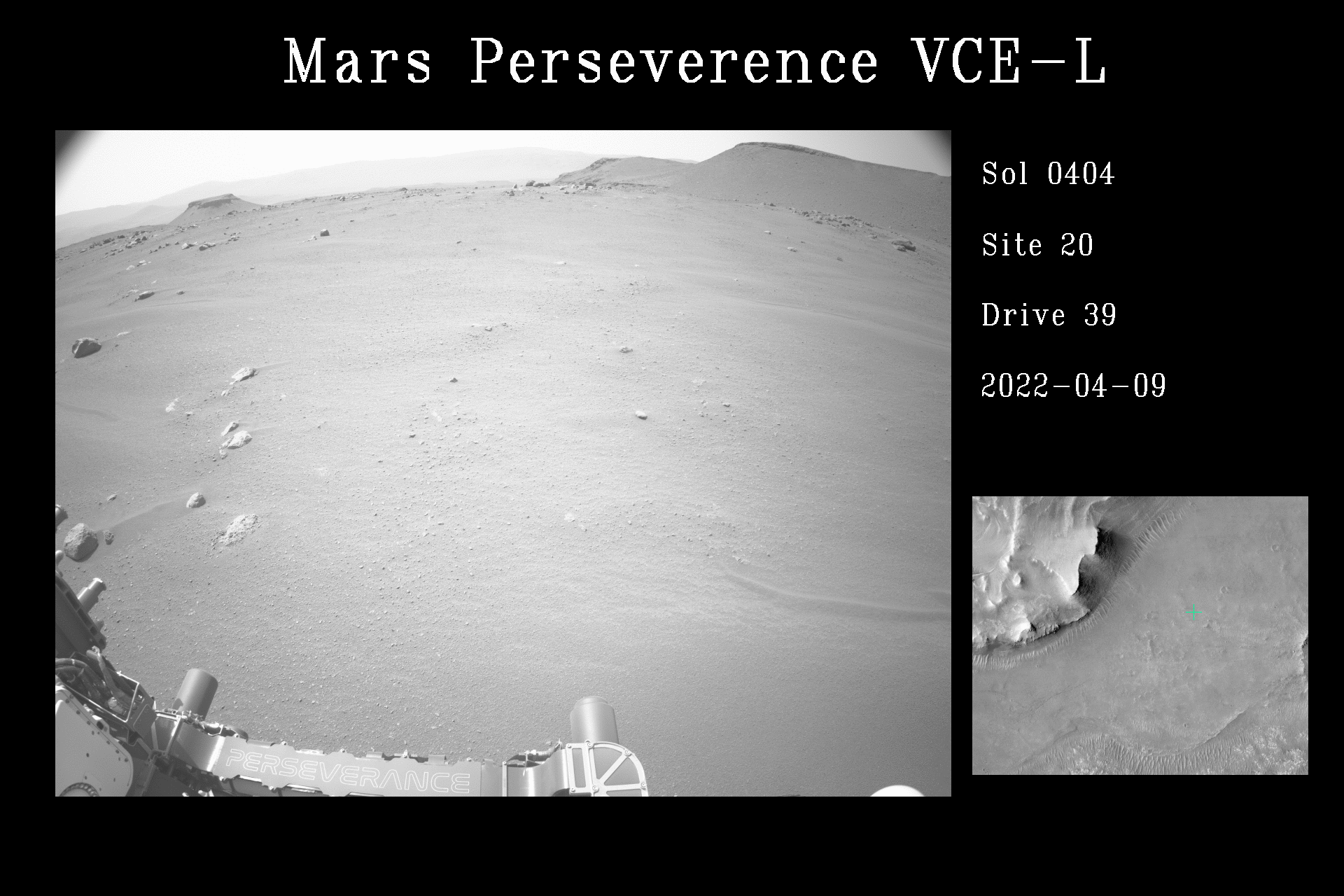AutoNav Drives Perseverance Forward
| Credit | NASA/JPL-Caltech |
|---|---|
| Language |
|
This video shows NASA’s Perseverance Mars rover using its auto-navigation, or AutoNav, technology to guide it during its drive to the delta. The video combines imagery taken on April 9, 2022, the 404th Martian day, or sol, of the mission, when Perseverance drove 841.7 feet (256.55 meters), with imagery taken on the following Martian day (sol 405), when it travelled 869.35 feet (264.98 meters).
AutoNav allows the rover to autonomously re-plan its route around rocks or other obstacles on its way to a pre-established destination. The video was taken by the rover’s navigation cameras; they are capable of color, but black-and-white images are better for navigation. The video has been sped up by roughly 200 times with about 30 seconds between frames.
A key objective for Perseverance’s mission on Mars is astrobiology, including the search for signs of ancient microbial life. The rover will characterize the planet’s geology and past climate, pave the way for human exploration of the Red Planet, and be the first mission to collect and cache Martian rock and regolith (broken rock and dust).
Subsequent NASA missions, in cooperation with ESA (European Space Agency), would send spacecraft to Mars to collect these sealed samples from the surface and return them to Earth for in-depth analysis.
The Mars 2020 Perseverance mission is part of NASA’s Moon to Mars exploration approach, which includes Artemis missions to the Moon that will help prepare for human exploration of the Red Planet.
NASA’s Jet Propulsion Laboratory, which is managed for NASA by Caltech in Pasadena, California, built and manages operations of the Perseverance rover.
For more about Perseverance:































